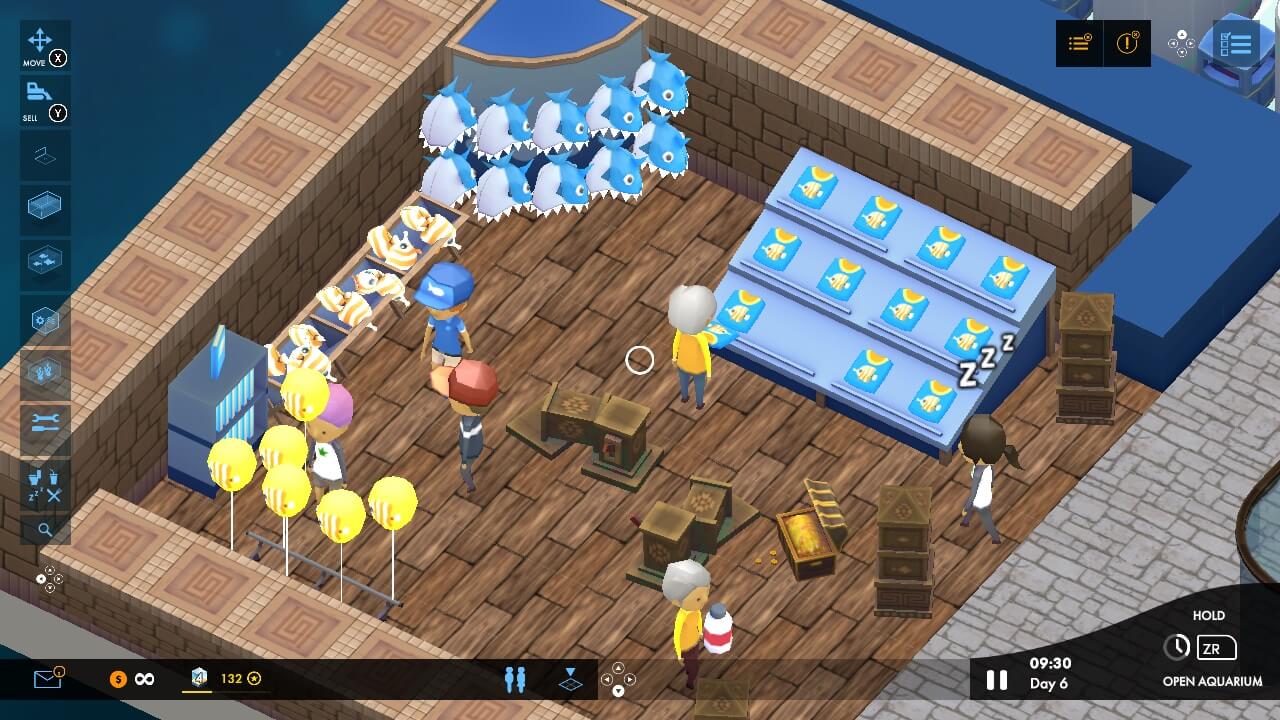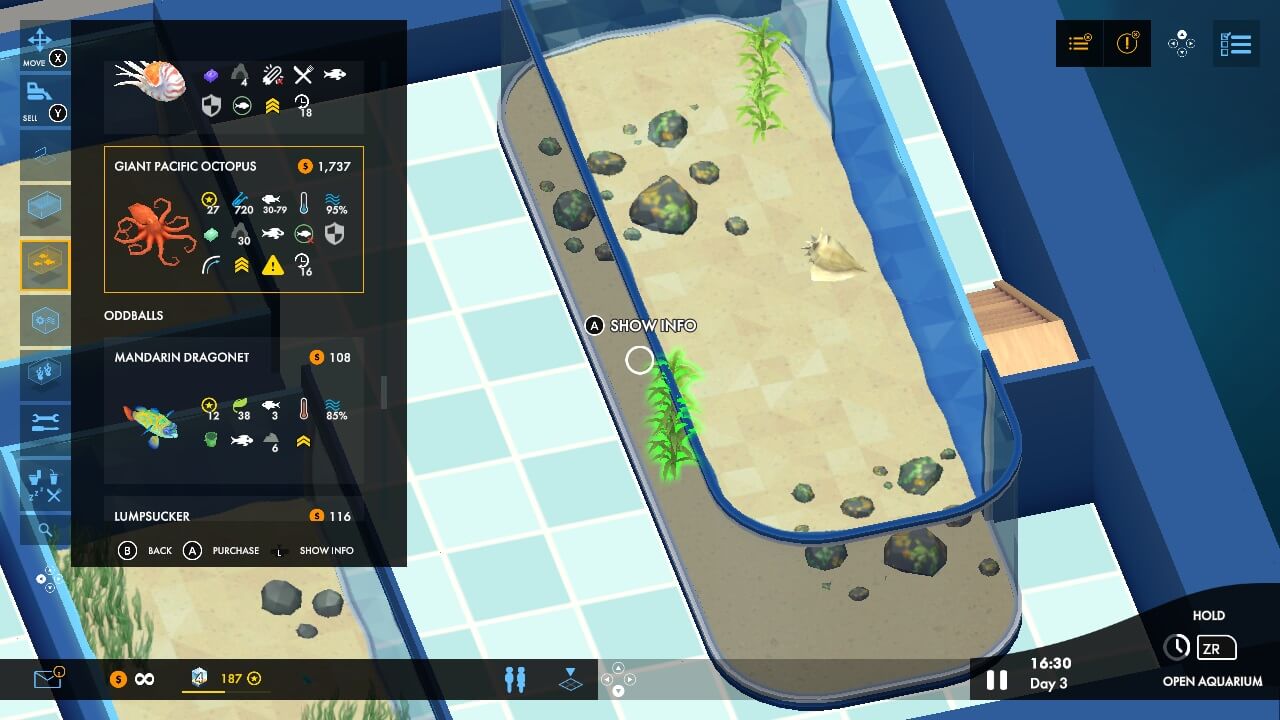Megaquarium — Fishy business
When it comes to management simulations, the strength of the area of focus is often the deciding factor between whether a game succeeds or not. Theme Park, for example, excited millions of fans with its theme, despite some relatively simplistic gameplay. Megaquarium, it seems, might have more of a niche audience — but what if you’re in that niche? Is it still worth diving in?
Before I go on, full disclosure. This review of Megaquarium relates to the Nintendo Switch version of the game, which has both advantages and disadvantages. Of course, the main thing is that the Switch allows Megaquarium to be played on the move, but it also means that this version is less visually impressive than any other version — although based on what I’ve read, that’s not as much of a problem as it might usually be.

And why not, you ask? Well, simply put, Megaquarium is almost exclusively about the inhabitants of each tank. It’s a game about fish, crabs, cephalopods and invertebrates. A game of water quality, filtration, heating and lighting. Yes, people will visit your aquarium (and some missions even focus on them) but in general, they are there simply to ensure that cash keeps flowing in. Manage the tanks, and the people will (usually) take care of themselves.

The game opens up with some small, straightforward aquariums that feature creatures with few demands that rarely want to eat each other. Fast forward to the midgame however, and you’ll find yourself needing to be very, very selective about how each tank is set up, including what inhabitants you put into it. Corals will need lights, crustaceans will need coral, fish will eat crustaceans, and all of them will have several other needs — like being housed with their pals, or being housed on their own, etc.
Now, when I refer to aquariums in Megaquarium, I don’t mean a singular tank, oh no. Megaquarium expects players to manage six, eight, ten, twenty tanks at once. This is where the theme park-esque elements come into play, with the players expanding their space (usually to any shape or size they like) and driving their guests through a maze of tanks in a logical flow. Each tank generates science and ecology points, depending on what is in it, with science points resulting in new hardware (tanks and equipment) and ecology yielding new tank inhabitants.

Each stage follows a fairly typical flow as a result, although the options expand exponentially as the levels roll on and, as you would expect, most levels through a curveball or two into the mix. For me, this makes Megaquarium a better prospect on the Nintendo Switch than it would have been on a fixed console or PC, since the bitesize challenges it offers weigh in at up to an hour or so each at most.

The benefits of the portable console don’t end there though, because Megaquarium looks, at best, pretty crap on the big screen. The tanks, vending machines, people and other features of the world are all easily distinguishable and it’s even possible to tell most fish apart, but they are far from eye candy in terms of presentation. Sound wise, well, there’s not much to report — the effects and music are forgettable at best, and I ended up playing a lot of Megaquarium with the sound muted.

When it boils down to it though, the fundamentals of Megaquarium are fairly solid, if unremarkable. As such, this is a game that could sink into the depths rather rapidly if it doesn’t happen to suit the tastes of its audience. Personally, as someone who has kept both tropical and marine fish, with a love for the subject, I’ve enjoyed my time with it. If you’re in a similar position then this aquarium might just be worth the price of entry.
Purchase Megaquarium on Humble Bundle.
Megaquarium is available now for PC, Nintendo Switch, PS4 and Xbox One.
Comments are closed.